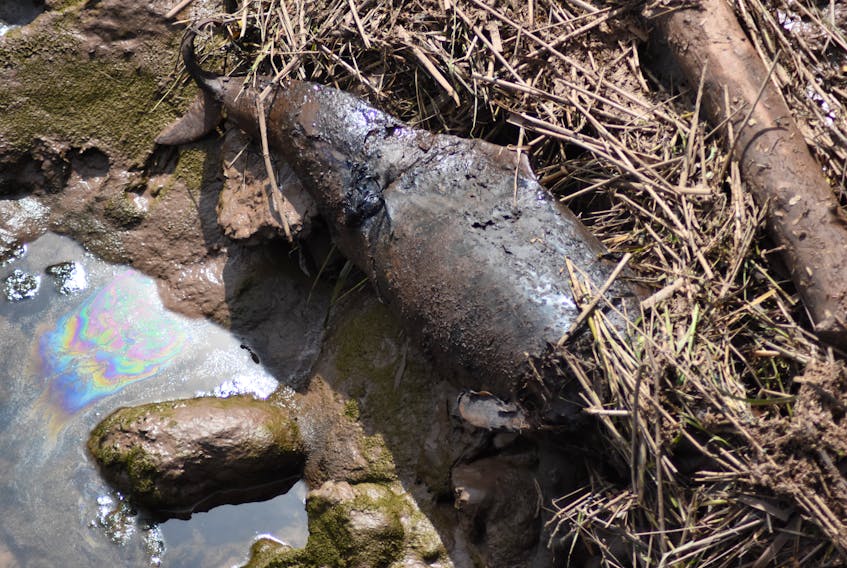KENTVILLE – A harbour porpoise carcass has been spotted washed up onto the banks of the Cornwallis River in downtown Kentville June 12.
Strong odour and visible decay clearly indicate the animal has been deceased for a significant period of time. Andrew Reid, response coordinator for the Marine Animal Response Society in Halifax, said while photos confirm this, it’s hard to tell exactly why the animal died.

He said he’s also unable to confirm whether the carcass’ head, which shows visible damage in photos taken of the carcass, was impacted before it died, or if it’s the result of scavenging.
“The head is often an area of scavenger damage – the lower jaw and damage to skin could be related to that,” he said.
Related:
- Harbourville humpback whale carcass washes away as another is beached in Magdalen Islands
- No necropsy for beached humpback whale carcass in Harbourville
- Marine animal society examines Harbourville beached whale carcass
- UPDATED: Thin body of beached whale carcass near Harbourville concerns marine animal society
Reid was notified of the carcass after 11 a.m. and is contacting MARS colleagues in Halifax on whether a response and necropsy will be ordered to determine how the animal died.
But with certain locations presenting challenges and circumstances – like how much the carcass has decayed – sometimes limit what information can be found, he said.

“We always try to perform necropsies when we can to determine how deaths occur,” he said.
“But the amount of information we can collect is limited at this point when it’s this far gone.”
There are several factors that could have led to why the harbour porpoise found its way as far down the river, said Reid.
The species is known to swim along coastlines and is used to navigating shallow waters – sometimes swimming up rivers and into areas like Port Williams, where porpoises are sometimes seen swimming.
But Reid cannot confirm any of these details until the team assesses the situation in person.
Updates to follow.









